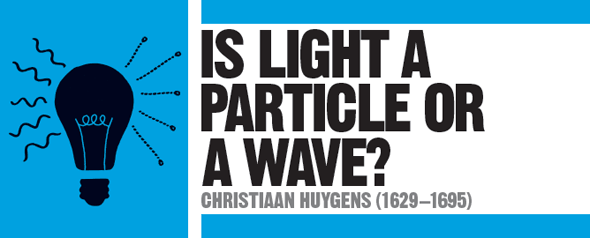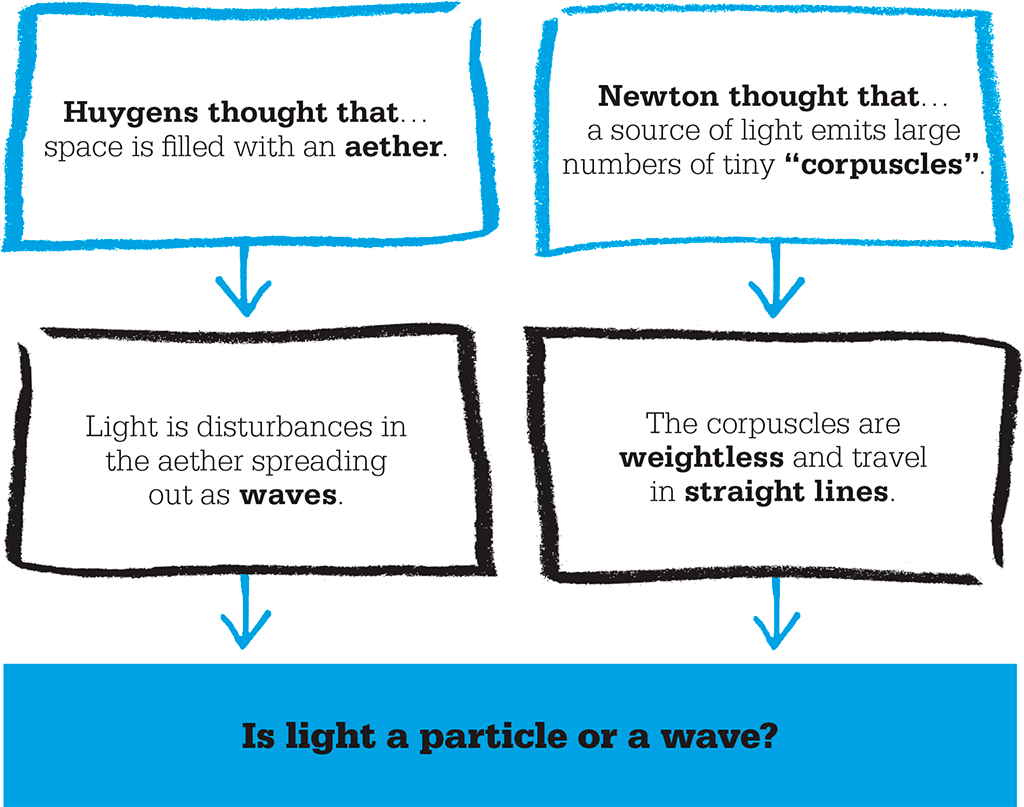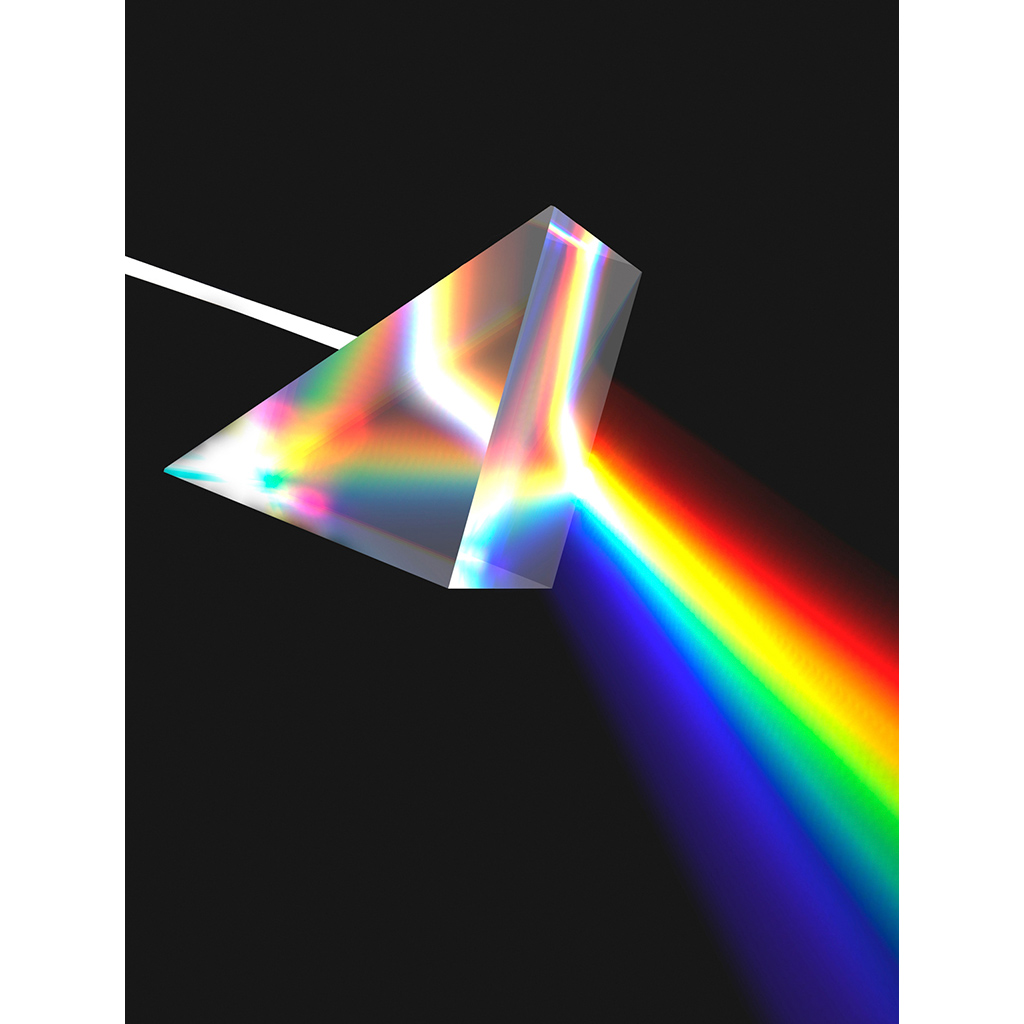
IN CONTEXT
Physics
11th century Alhazen shows that light travels in straight lines.
1630 René Descartes proposes a wave description of light.
1660 Robert Hooke states that light is a vibration of the medium through which it propagates.
1803 Thomas Young describes experiments that demonstrate how light behaves as a wave.
1864 James Clerk Maxwell predicts the speed of light and concludes that light is a form of electromagnetic wave.
1900s Albert Einstein and Max Planck show that light is both a particle and a wave. The quanta of electromagnetic radiation they recognize become known as “photons”.
In the 17th century, Isaac Newton and the Dutch astronomer Christiaan Huygens both pondered the true nature of light, and reached very different conclusions. The problem they faced was that any theory about the nature of light had to explain reflection, refraction, diffraction, and colour. Refraction is the bending of light as it passes from one substance to another, and is the reason that lenses can focus light. Diffraction is the spreading out of light when it passes through a very narrow gap.
Before Newton’s experiments, it was widely accepted that light gained its quality of colour by interacting with matter – that the “rainbow” effect seen when light passes through a prism is produced because the prism has somehow stained the light. Newton demonstrated that the “white” light that we see is actually a mixture of different colours of light, and these are split up by a prism because they are all refracted by slightly different amounts.
In common with many natural philosophers of the time, Newton held that light was made up of a stream of particles, or “corpuscles”. This idea explained how light travelled in straight lines and “bounced” off reflective surfaces. It also explained refraction in terms of forces at the boundaries between different materials.

Partial reflection
However, Newton’s theory could not explain how, when light hits many surfaces, some is reflected and some is refracted. In 1678, Huygens argued that space was filled with weightless particles (the aether), and that light caused disturbances in the aether that spread out in spherical waves. Refraction was thus explained if different materials (be they aether, water, or glass) caused light waves to travel at different speeds. Huygens’ theory could explain why both reflection and refraction can occur at a surface. It could also explain diffraction.
Huygens’ ideas made little impact at the time. This was in part due to Newton’s already giant stature as a scientist. However, a century later, in 1803, Thomas Young showed that light does indeed behave as a wave, and experiments in the 20th century have shown that it behaves both like a wave and a particle, although there are big differences between Huygens’ “spherical waves” and our modern models of light. Huygens said that light waves were longitudinal as they passed through a substance – the aether. Sound waves are also longitudinal waves, in which the particles of the substance the wave is passing through vibrate in the same direction as the wave is travelling. Our modern view of light waves is that they are transverse waves that behave more like waves of water. They do not need matter to propagate (transmit), while particles vibrate at right angles (up and down) to the wave’s direction.

When white light passes through a prism, it is refracted into its component parts. Huygens explained that this is due to light waves travelling at different speeds through different materials.
CHRISTIAAN HUYGENS

Dutch mathematician and astronomer Christiaan Huygens was born in The Hague in 1629. He studied law and mathematics at university, then devoted some time to his own research, initially in mathematics but then also in optics, working on telescopes and grinding his own lenses.
Huygens visited England several times, and met Isaac Newton in 1689. In addition to his work on light, Huygens had studied forces and motion, but he did not accept Newton’s idea of “action at a distance” to describe the force of gravity. Huygens’ wide-ranging achievements included some of the most accurate clocks of his time, the result of his work on pendulums. His astronomical work, carried out with his own telescopes, included the discovery of Titan, the largest of Saturn’s moons, and the first correct description of Saturn’s rings.
Key works
1656 De Saturni Luna Observatio Nova
1690 Treatise on Light
See also: Alhazen • Robert Hooke • Isaac Newton • Thomas Young • James Clerk Maxwell • Albert Einstein